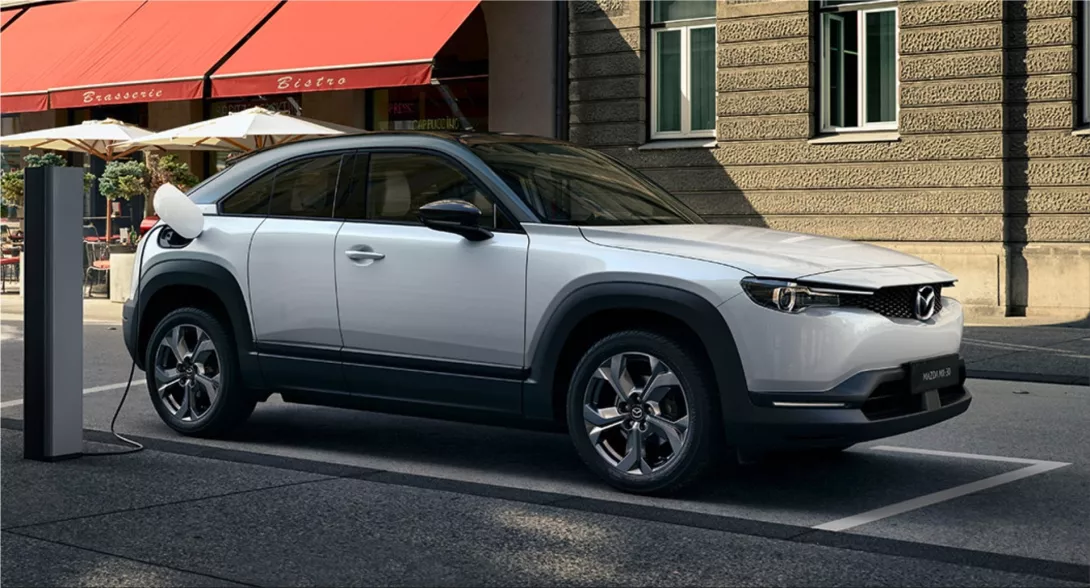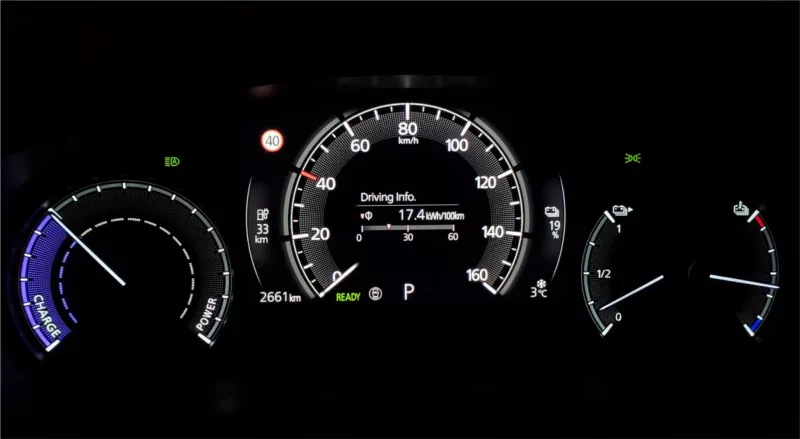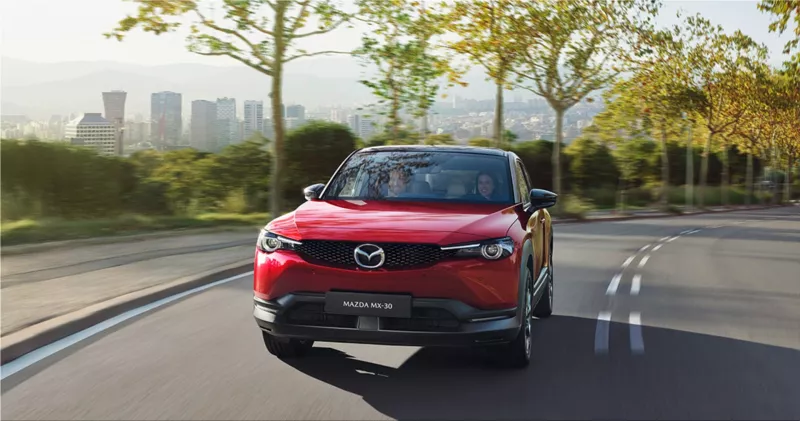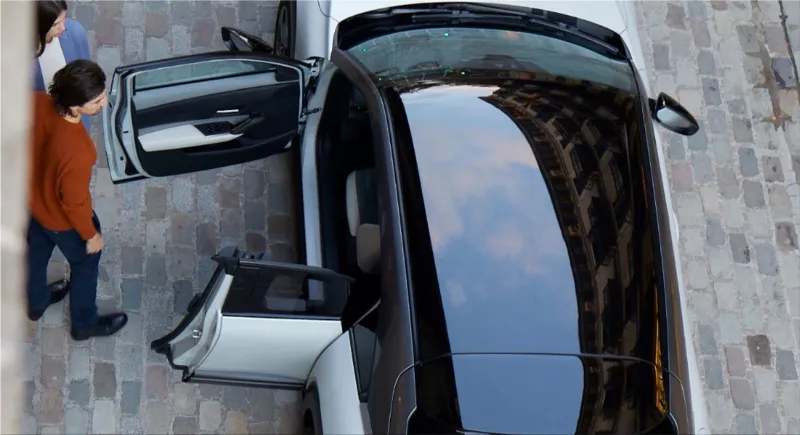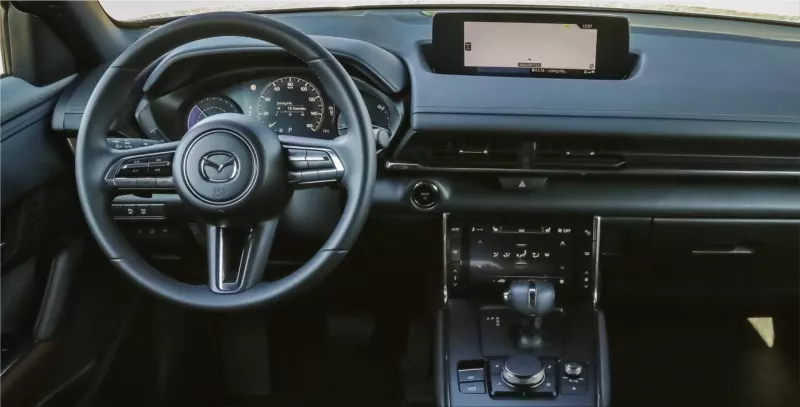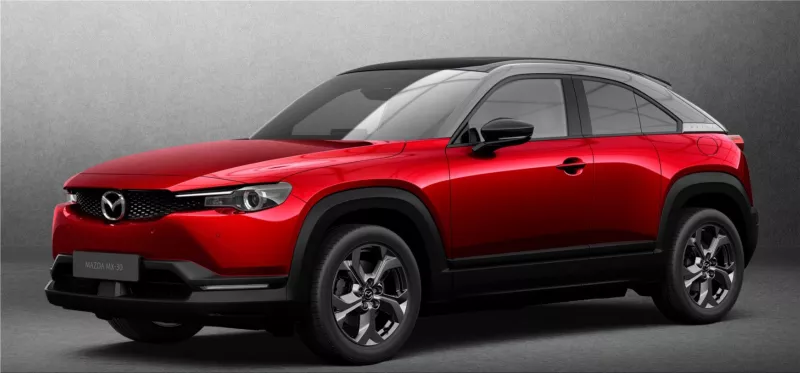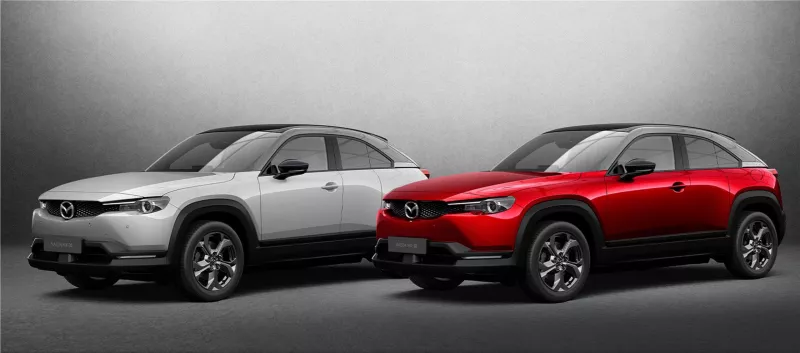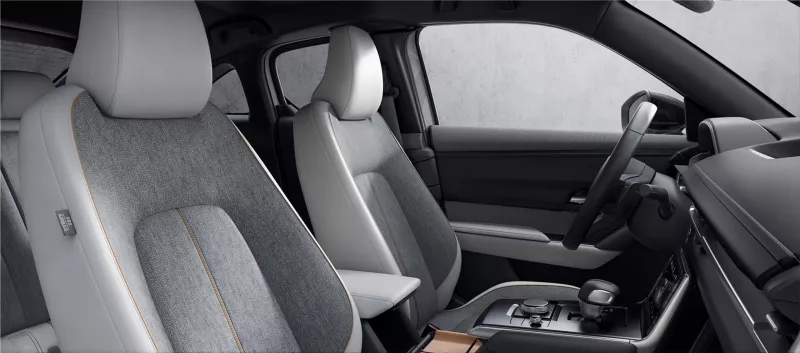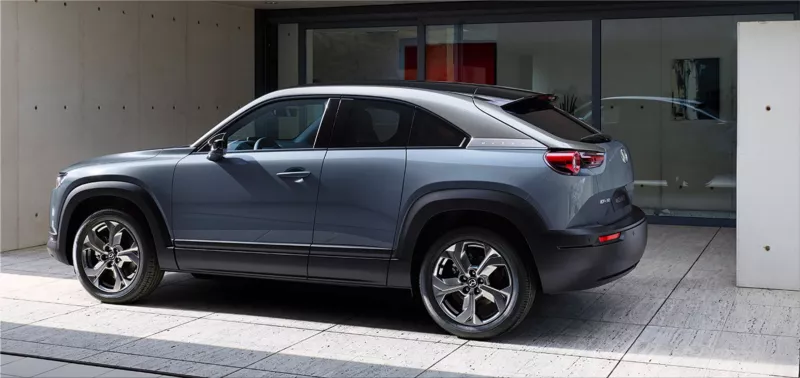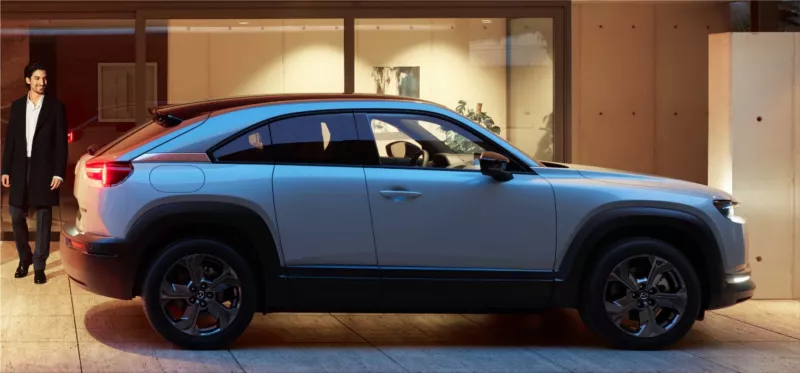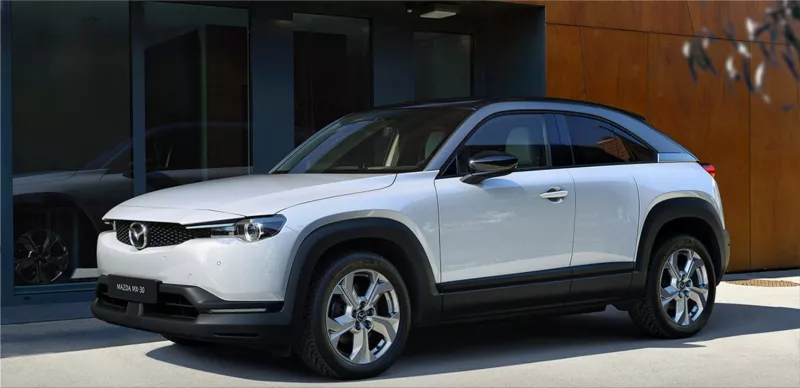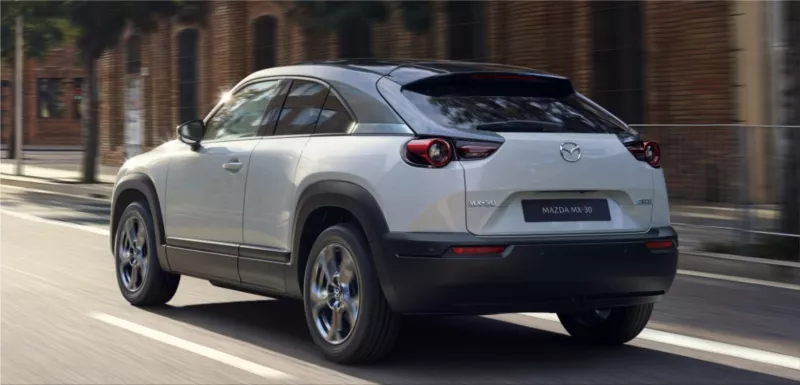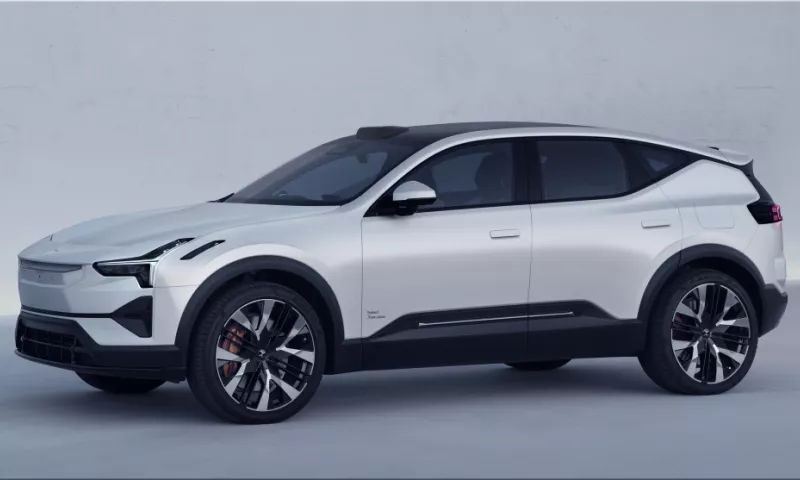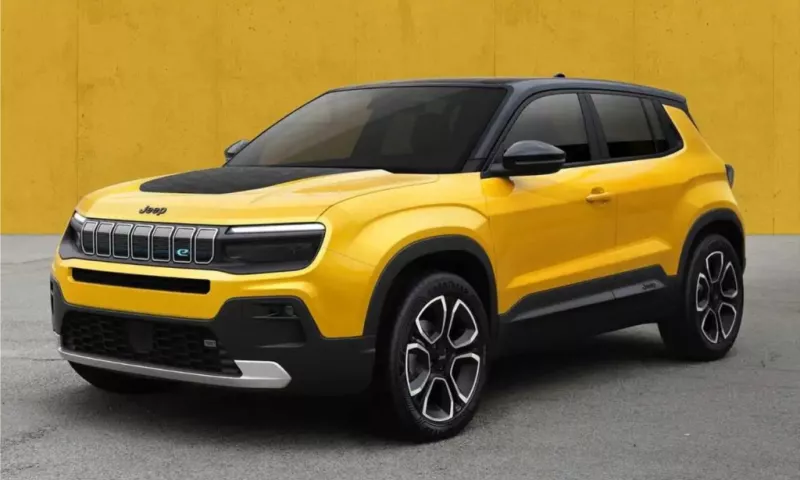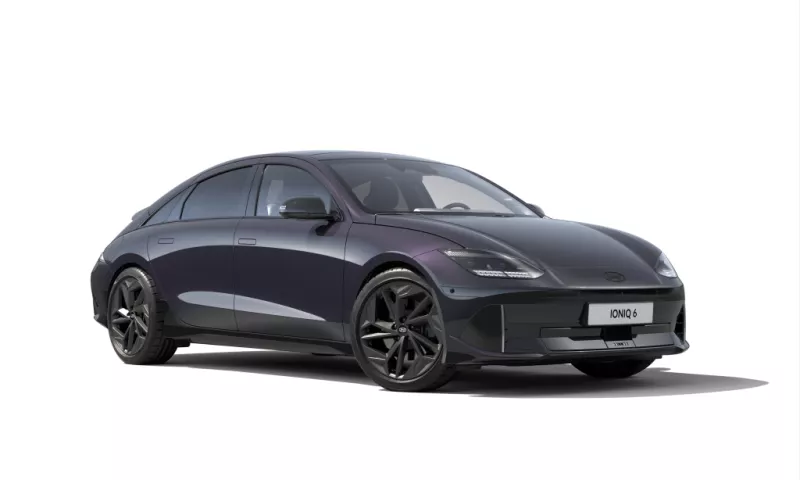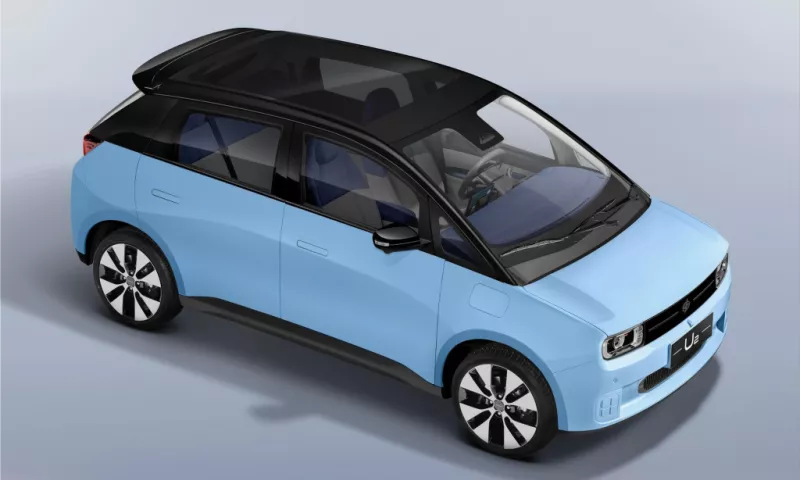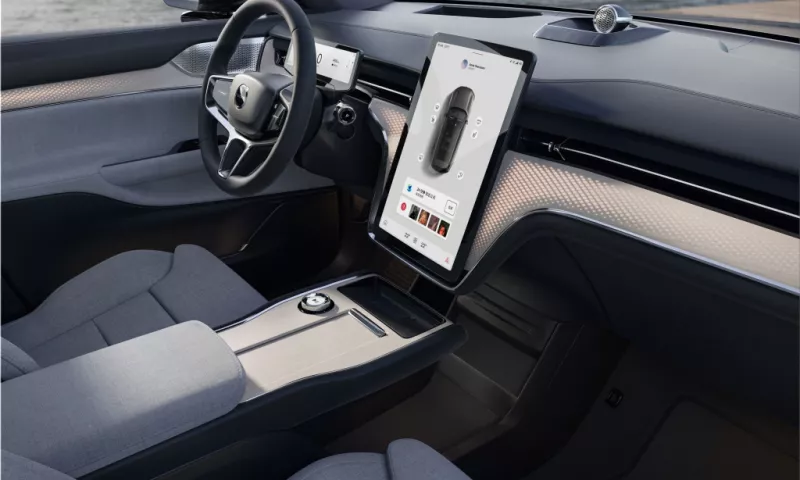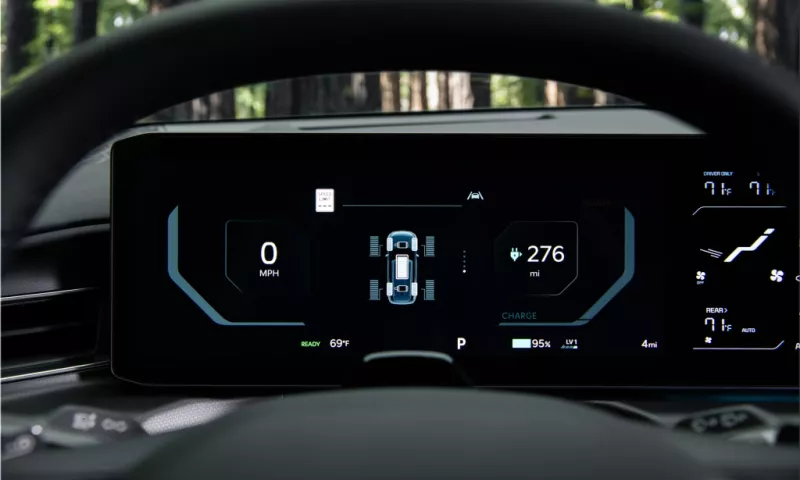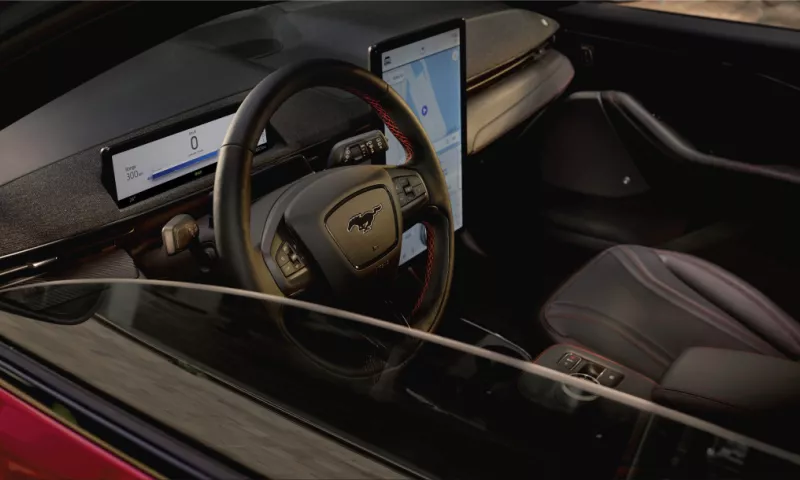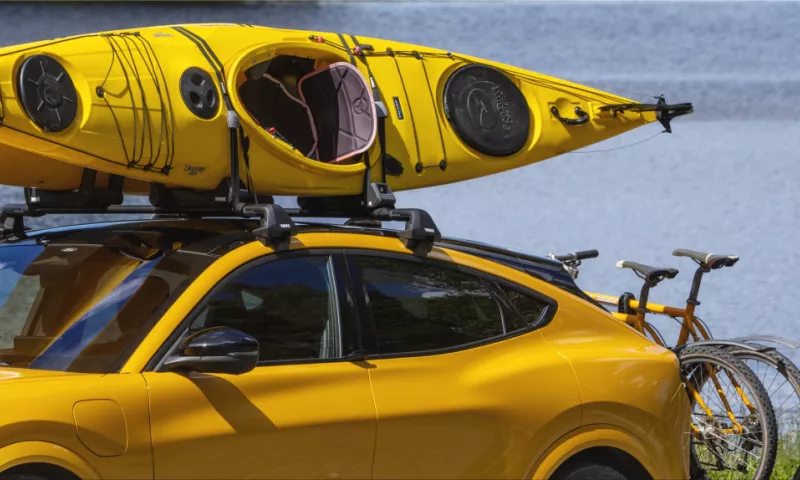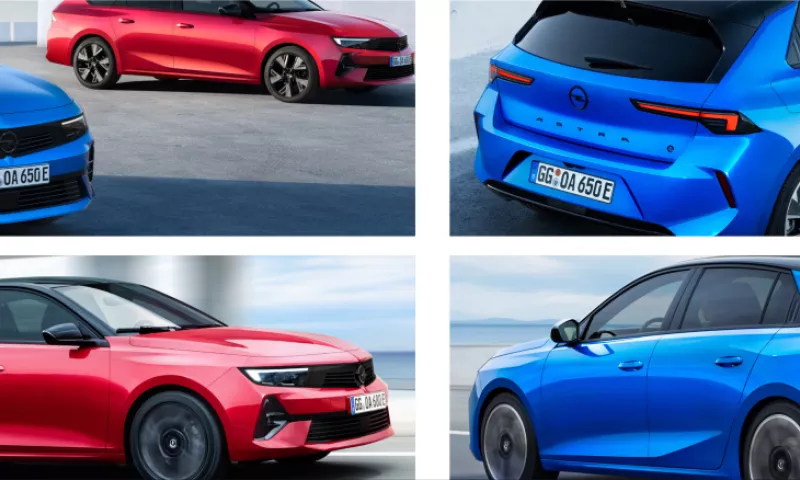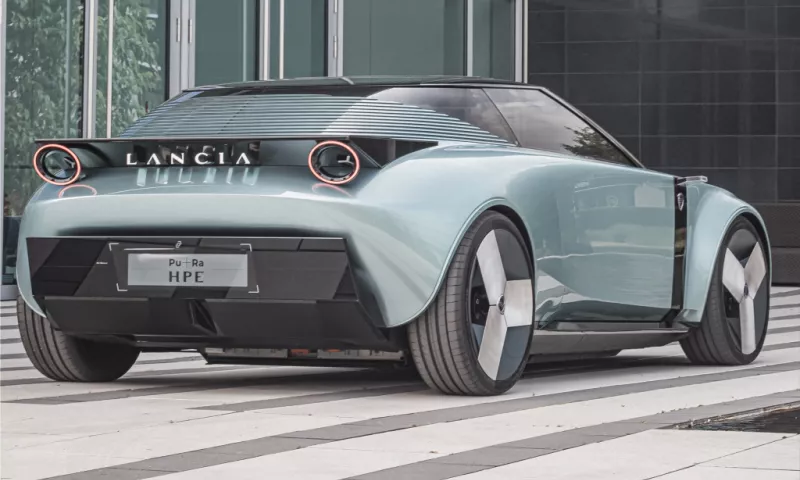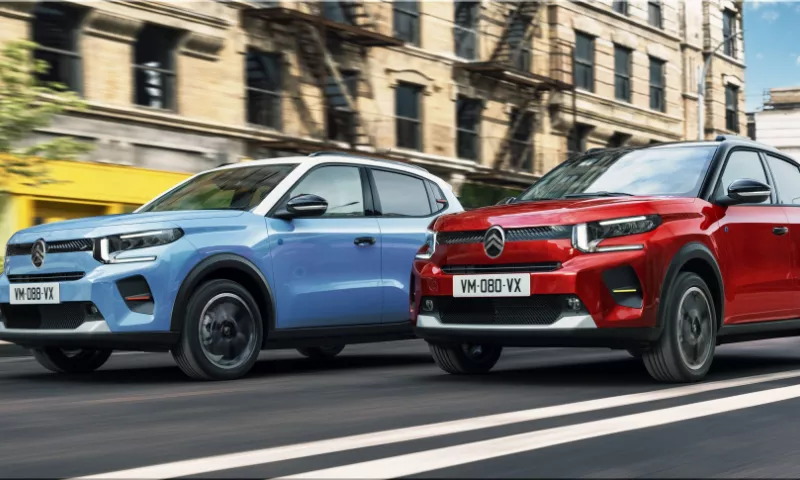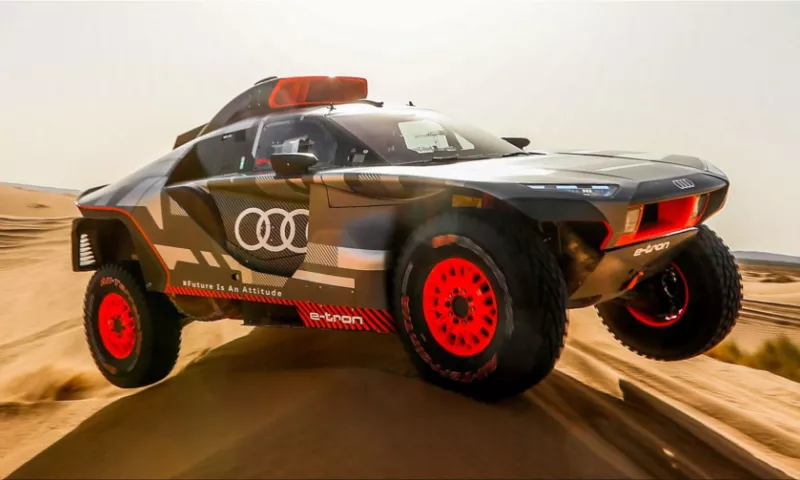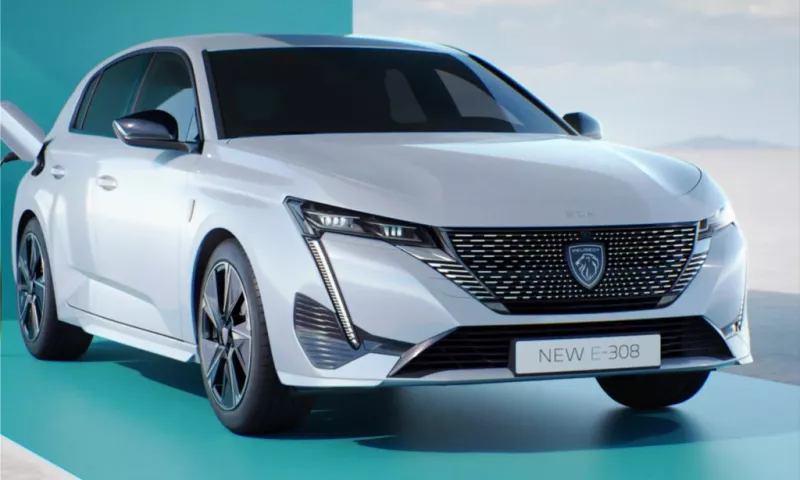Mazda's history began to be written more than 100 years ago. Mazda came up with more or less avant-garde solutions or chose to swim against the current during this period. The Mazda MX-30 electric car integrates perfectly into the current design line of the Japanese manufacturer. Still, it comes with something unique to draw our attention.
The electric car is a crossover with five seats and four doors, but it proposes a coupe-like design, with the roofline descending steeply to the rear. The rear window is heavily tilted, the hood is long, and the front doors are large, just like a genuine coupe. Much more interesting are the rear doors, especially the way they open. They are practically half as big as they should be and open in the opposite direction. You can't help but remember the Mazda RX-8 when you see them open.
The rear doors also integrate the central upright, which disappears from the landscape when both rows of doors on one side are open. The advantage of this lies in the more accessible access to the rear seats, compared to what a classic coupe body would entail, even if, in reality, the access remains difficult. The disadvantage is that the rear doors can only be opened if the front ones are open, and the angle at which the front doors must be opened to be able to open the rear ones is not very small, I would say somewhere at 30 degrees.
If we keep analyzing the opening angles of the doors, then I can't help but appreciate how much the front ones open. It's almost 90 degrees, and when you add to the equation the fact that the dimensions of these doors are extremely generous, it means that you sit on the front seats without the slightest inconvenience.

